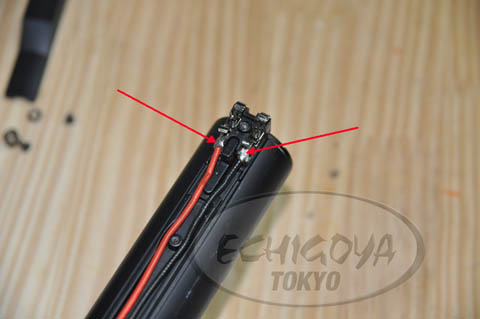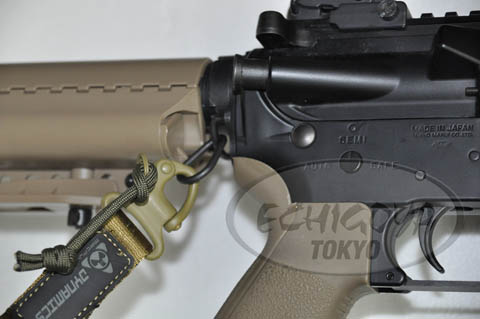2012年03月27日
Daniel Defense M4 V7 5.56mm
私たちのブログを訪問していただきありがとうございます。あなたがお持ちの場合DIYの要求は私達に電子メールを送信してください。
Mid-length gas system AR that will withstand the toughest environments!

The Daniel Defense M4 V7 in 5.56mm combines a mid-length gas system with a unique modular rail system that has movable 3-inch sections of Picatinny rail. It is shown equipped with an Aimpoint PRO optic, Contour GPS/camera module and Lancer L5 AWM magazines.
Daniel Defense, although a relatively young company first started in 2000, has made an indelible mark on the tactical AR market. Combining top-notch quality, cutting-edge design and word-of-mouth endorsements from those in the know, the Daniel Defense M4 series of AR carbines are extremely well respected in tactical circles.
At the heart of this success is a simple but telling tagline with which the company dubs its weapons: Mil-Spec+. If you are familiar with the current semi-automatic market of AR carbines, you undoubtedly have run across the seemingly unending debate over who makes true “Mil-Spec,” who does not, and what the term actually constitutes. The concept of what is “Mil-Spec” carries such weight because the current M16 has served for roughly five decades in one form or another with the U.S. military, which has resulted in a design that has been refined and enhanced through significant real-world experience.

The Modular Float Rail 12.0 features a smooth, slim body that is only 1.75 inches wide but can accept included 3-inch strips of Picatinny rail that can be repositioned.
So the question of which semi-auto AR variant most closely fulfills the stringent requirements of “Mil-Spec” is a source of significant contention in some circles. And, obviously, the variant that most closely replicates all these advancements in a semi-auto form is of great interest to the LE officer looking for the best possible patrol/tactical carbine that can be acquired.

The Modular Float Rail 12.0 is free-floated for accuracy, and completely conceals the M4 V7’s low-profile, mid-length gas block.
By Michael O. Humphries, Images by Steve Woods
BLOG ARCHIVES

2012年03月27日
iPhone 4s vs .50 cal armor piercing incendiary rounds
私たちのブログを訪問していただきありがとうございます。あなたがお持ちの場合DIYの要求は私達に電子メールを送信してください。
I was expecting the iphone to shatter in million pieces in one shot but it didn’t. So that proves iphone is really sturdier than they appear.

BLOG ARCHIVES

I was expecting the iphone to shatter in million pieces in one shot but it didn’t. So that proves iphone is really sturdier than they appear.

BLOG ARCHIVES

2012年03月27日
Magpul Type Ambidextrous Sling Installation
私たちのブログを訪問していただきありがとうございます。あなたがお持ちの場合DIYの要求は私達に電子メールを送信してください。
This is a DIY on how to install The ARS ambidextrous sling attachment to the Tokyo Marui M4 Recoil Shock Series. I wish I had a guide like this when I did mine, because I ended up scratching the buffer tube, and installing it misaligned.

You will need few basic tools to do this
1. Philips screwdriver
2. Soldering iron (this is important if you want to do it properly)
3. Flat head screwdriver or a knife


First remove the buttstock by sliding it off the buffer tube. Then remove the three screws as shown.

Remove the wire cover and you will see the wires with the connector that contacts with the stock pipe battery plate.


Now using a soldering iron, you have to detach the connector assembly.

Shown here as the wires are disconnected (this is really important to do a good job, otherwise you will have trouble screwing back your buffer tube)

Remove the wire cover here.

Using a stockpipe wrench loosen the buffer tube ring until you can pull the wires off it.

Then do the same thing with the receiver backplate.

Now you are ready to unscrew the buffer tube.

After removing the buffer tube, you are now ready to replace the metal back plate with the ambidextrous sling attachment.

Now reattach the buffer tube slowly making sure that you don’t scratch the finish on the pipe.

Now insert the wires inside the sling attachment and the buffer tube ring.

From here, it’s just a matter of backtracking and putting everything back the way you disassembled you it.
Here’s how it look after attaching the magpul sling.



NEWS ARCHIVES

This is a DIY on how to install The ARS ambidextrous sling attachment to the Tokyo Marui M4 Recoil Shock Series. I wish I had a guide like this when I did mine, because I ended up scratching the buffer tube, and installing it misaligned.
You will need few basic tools to do this
1. Philips screwdriver
2. Soldering iron (this is important if you want to do it properly)
3. Flat head screwdriver or a knife
First remove the buttstock by sliding it off the buffer tube. Then remove the three screws as shown.
Remove the wire cover and you will see the wires with the connector that contacts with the stock pipe battery plate.
Now using a soldering iron, you have to detach the connector assembly.
Shown here as the wires are disconnected (this is really important to do a good job, otherwise you will have trouble screwing back your buffer tube)
Remove the wire cover here.
Using a stockpipe wrench loosen the buffer tube ring until you can pull the wires off it.
Then do the same thing with the receiver backplate.
Now you are ready to unscrew the buffer tube.
After removing the buffer tube, you are now ready to replace the metal back plate with the ambidextrous sling attachment.
Now reattach the buffer tube slowly making sure that you don’t scratch the finish on the pipe.
Now insert the wires inside the sling attachment and the buffer tube ring.
From here, it’s just a matter of backtracking and putting everything back the way you disassembled you it.
Here’s how it look after attaching the magpul sling.
NEWS ARCHIVES

2012年03月27日
Beretta Px4 Special Duty .45 ACP
私たちのブログを訪問していただきありがとうございます。あなたがお持ちの場合DIYの要求は私達に電子メールを送信してください。
One of the most technological developments in a tactical sidearm!

This Px4 is accurate, reliable and fits nicely in the hand. Built for the harshest conditions, it is designed to go anywhere the operation takes it. Shown here with an Insight WX150 light.
The latest variant for Beretta is the Px4. Introduced in 2004, it took into account many of the requests made by agencies and professionals. The triggerguard, although ample in size, was rounded a bit for concealed carry. The takedown pin changed as well as the slide spring. The action is set up so there is very little feed ramp “bounce” to facilitate enhanced reliability. It is also has an exclusive rotating barrel system that provides for consistent and solid lockup. The accessory rail under the barrel was also added to accommodate lights and other devices. A removable grip strap was added to fit different hand sizes, as well as an ambidextrous safety/decocker and a reversible magazine release. There really is a ton of innovation in this pistol and it offeres those who either prefer or must carry a double-action/single-action pistol a modern, state-of-the-art choice.
Beretta is easily considered a leader in the 9mm pistol market. But as the military and others have clamored for a .45 ACP pistol, Beretta has come through with the Special Duty .45 ACP pistol. This pistol was developed to meet the requirements of the Joint Combat Pistol as specified by SOCOM. Designed to deal with the harshest of conditions, it utilizes materials that will hold up to serious abuse. It is equipped with both a single-flush magazine, holding 9 rounds, and two 10-round magazines with an extended base.

With controls that can be reached easily in a system familiar to our troops, Beretta’s Special Duty .45 ACP is an excellent example of a modern combat pistol designed with the special operator in mind.
All of them are coated in a special PVD coating that provides corrosion resistance and some lubricity. The barrel is extended, allowing it to be threaded where necessary. The pistol comes in a really nice waterproof case that keeps everything nicely packed away, and provides some room for a light or laser with a bit of effort. The lower and the case are in the earth color that our operating environment requires these days.

To accommodate an array of shooters, the mag release can be changed to operate on either side.
By Dave Bahde, Images by Sean Utley
BLOG ARCHIVES


